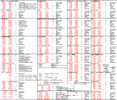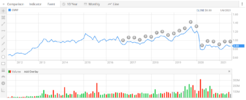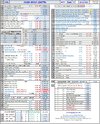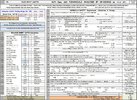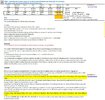DrBourse
If you don't Ask, you don't Get.
- Joined
- 14 January 2010
- Posts
- 884
- Reactions
- 2,067
Anyone that plays in the "ASX Sandpit" needs to understand that the following is how a lot of unmentionables make their living, unfortunately "off the masses".......
During the year and in particular during Feb & Aug each year the “The Guesstimate Seasons” begin, Financial Results have been published and digested by all the Experts, where those Expert Broking Houses and Analysts try to Guess what the upcoming Targets will be, (& also what next year will produce) for varying Companies.
I would suggest Extreme Caution, as history has shown that most of these Guesstimates are WRONG.
It's a Game that most Expert Analysts, Broking Houses & Economists play – they are consistently wrong - nearly every year on nearly every stock they "Over Guesstimate Projected Earnings", then when they realise they were wrong yet again, they issue a downgrade within a few months (or Years) that conveniently meets the then current price.
Their Inflated Guesstimates continually lead the Sheep up the garden path as they force the prices up, then the same Expert Analyst’s, Broking Houses & Economists do a downgrade, so they can buy when the Sheep have to sell --- SOME OF THESE ANALYSTS ARE REALLY JUST LICENSED RAMPERS --- Grrrrrrrrrrr.
Admittedly some Broking Houses receive Briefings directly from some Companies, the problem with that is that the Broking houses then somehow manage to ‘embellish’ those briefing figures to ridiculous levels, they manage to use words like, ‘we anticipate, we calculate, we project, etc, etc.
Broking Houses can’t be seen to just relay the Co Briefings ‘word for word’ as the Companies quote them – that would render the Brokers Reports as “useless repetition”.
IMO, Brokers Exist only to make you "BROKER"......
During the year and in particular during Feb & Aug each year the “The Guesstimate Seasons” begin, Financial Results have been published and digested by all the Experts, where those Expert Broking Houses and Analysts try to Guess what the upcoming Targets will be, (& also what next year will produce) for varying Companies.
I would suggest Extreme Caution, as history has shown that most of these Guesstimates are WRONG.
It's a Game that most Expert Analysts, Broking Houses & Economists play – they are consistently wrong - nearly every year on nearly every stock they "Over Guesstimate Projected Earnings", then when they realise they were wrong yet again, they issue a downgrade within a few months (or Years) that conveniently meets the then current price.
Their Inflated Guesstimates continually lead the Sheep up the garden path as they force the prices up, then the same Expert Analyst’s, Broking Houses & Economists do a downgrade, so they can buy when the Sheep have to sell --- SOME OF THESE ANALYSTS ARE REALLY JUST LICENSED RAMPERS --- Grrrrrrrrrrr.
Admittedly some Broking Houses receive Briefings directly from some Companies, the problem with that is that the Broking houses then somehow manage to ‘embellish’ those briefing figures to ridiculous levels, they manage to use words like, ‘we anticipate, we calculate, we project, etc, etc.
Broking Houses can’t be seen to just relay the Co Briefings ‘word for word’ as the Companies quote them – that would render the Brokers Reports as “useless repetition”.
IMO, Brokers Exist only to make you "BROKER"......

